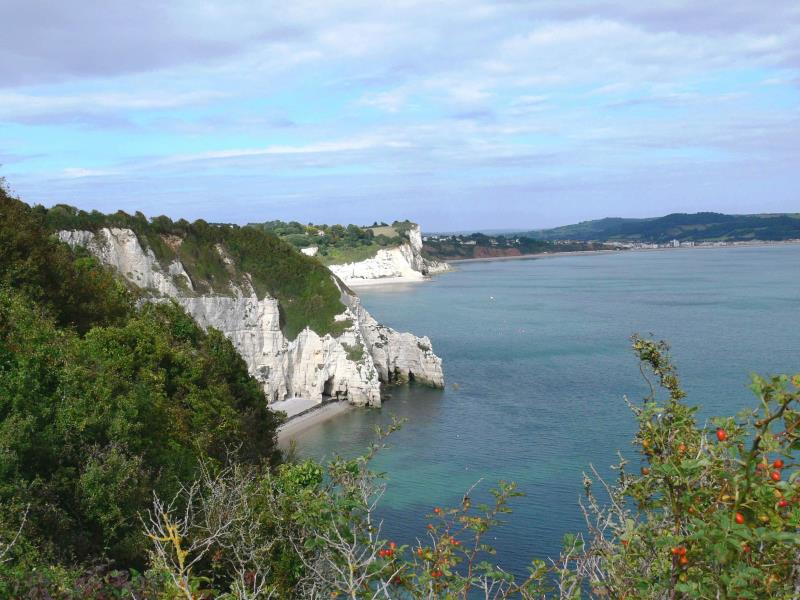C RWG
O

Cliffs in Upper Cretaceous Chalk, Beer, Devon.
The extensive outcrops of the Chalk in the cliffs of the east Devon coast are the most westerly in the Anglo-Paris sedimentary basin. They include evidence of shallower water deposition than that of the Chalk of the Sussex type area in the form of erosion surfaces and condensed successions. Despite this, not only can representatives of all the standard formations be recognised, but at some levels individual named flint bands and marl seams a few centimetres thick have been shown to be present at the same stratigraphical levels in both areas.
Clay-with-flints resting on Chalk, Salcombe Regis, Devon.
An extensive early Tertiary planation surface in east Devon and west Dorset is overlain by the thickest preserved successions of early Tertiary Clay-with-flints in England. Extensive remobilisation of these heterogeneous mixtures of clay, sand and gravel during periglacial climates in the Pleistocene has obscured almost all of their original sedimentary and textural features. The formation rests on an irregular surface of partially dissolved in situ Upper Greensand and Chalk. The partially dissolved layers and the Clay-with-flints were folded and faulted in the Miocene. The principal phase of dissolution is presumed to have been in warm moist climates during the Palaeocene-Eocene Thermal Maximum.
C RWG
O
C RWG
O